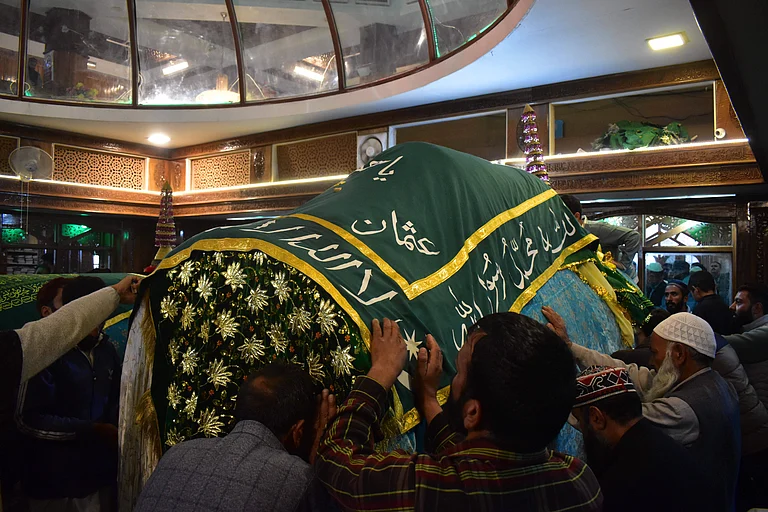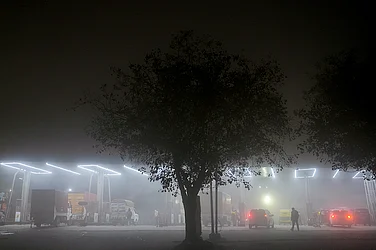Security forces have launched a massive rescue operation to trace missing pilgrims who were hit by flash floods triggered by a cloudburst near the holy Amarnath Shrine on Friday evening.
The Indian Air Force (IAF) has pressed Mi-17 helicopters in rescue operations at the Amarnath cave site. The Indian Army and other security agencies have been clearing the debris as the search for missing persons is on.
According to officials, 65 wounded pilgrims have been rescued from the debris and are being attended to. About 15,000 pilgrims have been moved to safety from near the shrine.
Sixteen pilgrims, who had taken the Baltal route to the shrine, have died and 35-40 others are believed to be missing.
The Amarnath shrine is situated at an altitude of 13,500 feet above sea level. The pilgrims trek a distance of 32 km from Chandanwari (Pahalgam route) and 14 km from Baltal to reach it.
The cloudburst triggered flash floods, damaging 25-30 tents and five community kitchens. Health department officials say only five out of 14 bodies have been identified. The officials say most of the pilgrims stranded near the holy cave last evening were shifted to Panchtarni, which serves as the base camp for Amarnath Yatra after Baltal.
Pilgrims who were safely evacuated from affected areas have recalled harrowing accounts of the tragedy. They said the flash floods swamped tents and community kitchens as mud and large rocks came down.
“I saw the tragedy happening myself. A huge mound of snow came down heavily. The snow and water carried a large number of stones, rocks and mud along with it, creating floods that took away tents. I trekked 16 kms to reach Baltal. No one should see what I have seen,” said a pilgrim.
He added, “I saw a girl crying as her parents died in the tragedy.”
The pilgrims were praising Army’s rescue operation.
The administration of Lt Governor Manoj Sinha has put all resources in the place to rescue pilgrims.
Lt Gen ADS Aujla, Commander of the Army’s 15 Corps, reached cloudburst-affected areas to take stock of the situation on Saturday morning. Inspector-General of Police (IGP) Kashmir Vijay Kumar and Divisional Commissioner Kashmir are also supervising rescue operations in the area. The IGP reached the area early Saturday morning.
On Saturday morning, the wounded were brought to the Baltal Army base camp from the Amarnath cave site for treatment and some of them have moved to Srinagar for specialised treatment.
Health department spokesman Mir Mushtaq said all hospitals in Srinagar are ready for any emergency. He said the helipad service has been kept in a state of emergency at Baltal to move patients to Srinagar’s Sher-i-Kashmir Institute of Medical Sciences for specialised treatment. He said so far, they have treated around 500 patients for minor injuries at the base camp hospital at Baltal.
An official of the Shri Amarnath Shrine Board (SASB) said that the Amarnath Yatra, which began on June 30, has been temporarily suspended following the cloudburst. He said the decision on its resumption will be taken after rescue operations end.
On June 30, the 43-day Amarnath yatra began after a gap of three years amid tight security all across Jammu and Kashmir. In 2019, the yatra was cancelled midway ahead of the Centre abrogating Article 370. In 2020 and 2021, the pilgrimage did not take place due to Covid-19 pandemic.
The area had received 31 mm of rainfall from 4:30 to 6:30 pm, according to the weather station at the Amarnath cave shrine.
In 1996, over 250 Amarnath pilgrims died due to bad weather on the Chandanwari route. The then National Conference government constituted a committee headed by retired IAS officer Dr Nitish Sengupta. He was asked to inquire into various aspects of the tragedy and suggest measures and remedies to avoid the recurrence of such incidents in future.
Dr. Sengupta in his report, submitted to the government on December 12, 1996, listed a number of suggestions. A copy of the report was laid on the table of both the houses of Parliament on December 18, 1996.
The report had called for setting up of Amarnath Shrine Board to coordinate efforts of the various agencies for supervision and management of Yatra. It had also recommended improving weather forecasting technology with the help of satellite forecasting system and providing information to pilgrims about the approximate forecasting. It had also called for regulation of the number of people on the Yatra route.
The report had also called for an arrangement of helicopters for carrying out immediate rescue operations in the event of unfavourable conditions. The government accepted almost all recommendations of the Committee.


























